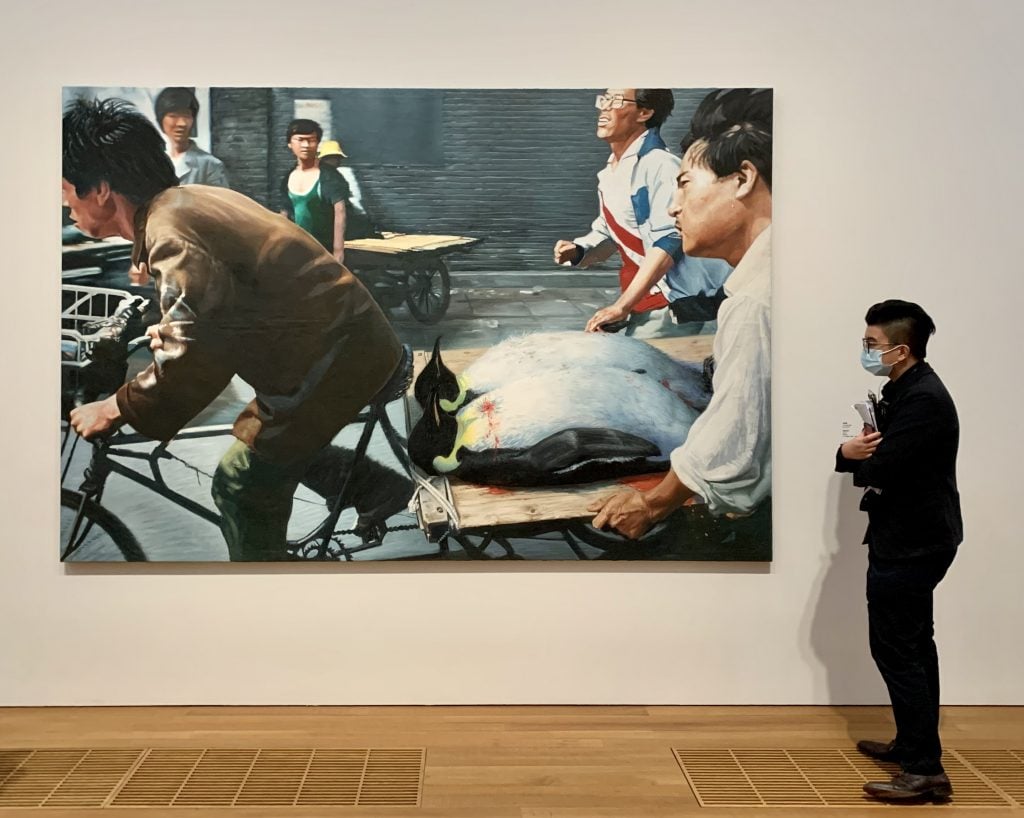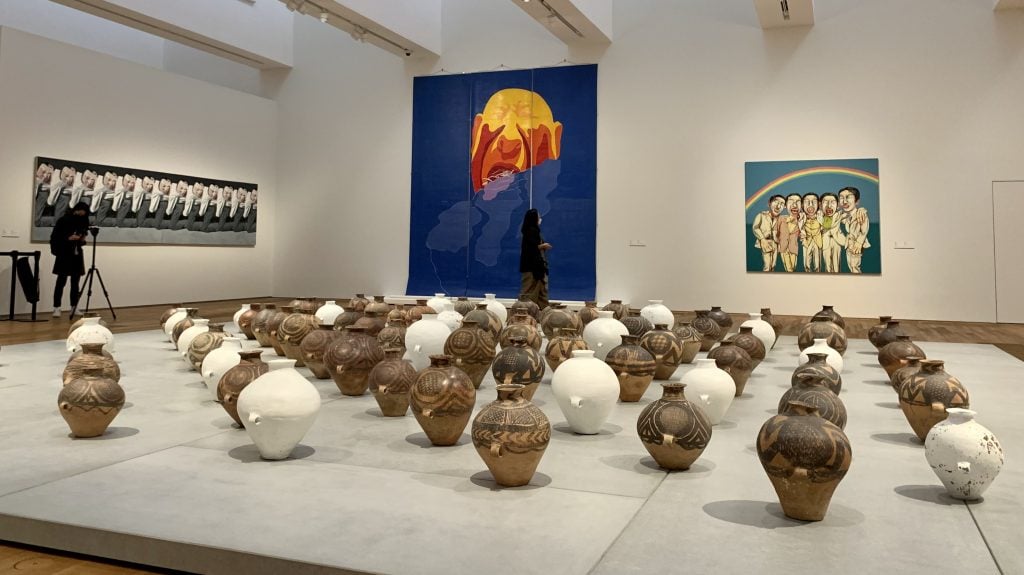Museums & Institutions
The M+ Museum Has Removed Three Political Paintings by Chinese Artists as Beijing Continues Its Clampdown on Hong Kong
The museum says the removal was part of a routine rehang.

The museum says the removal was part of a routine rehang.

Vivienne Chow

Three politically engaged works by Chinese contemporary artists have been removed from an exhibition at Hong Kong’s M+ museum that showcases the collection donated by Swiss mega-collector Uli Sigg.
The removal was discovered when the museum reopened today after a prolonged period of pandemic-related closures.
The three works were Wang Xingwei’s New Beijing (2001), Zhou Tiehai’s Press Conference III (1996), and Wang Guangyi’s Mao Zedong: Red Grid No. 2 (1989), according to local media service Ming Pao. But images of the paintings can still be seen on the museum’s website, as of the time of writing.
New Beijing, which sees two wounded penguins being rushed away on the back a tricycle flatbed, is a clear reference to a famous news photograph by Liu Heung Shing, in which two protesters are being taken to the hospital during the 1989 Tiananmen Massacre in Beijing.
Mentioning or memorializing the event has always been a taboo act in China. An annual vigil commemorating the victims had long been held in Hong Kong until 2020, when police refused to grant permits for gathering. Organizers were arrested the following year under the national security law.
Meanwhile, Zhou Tiehai’s Press Conference III references the Cold War, and Wang Guangyi’s Mao painting places the image of the late Communist leader behind the red grids.
However, works by artist-activist Ai Weiwei are still on display.

M+ Sigg Collection exhibition: Ai Weiwei, Whitewash (1995–2000) (at front); (back, left to right): Yue Minjun, Everybody Connects to Everybody (1997); Fang Lijun, 1996.1B (1996); Zeng Fanzhi, Mask: Rainbow (1997). Photo: Rachel Wong.
The removal of the paintings from the exhibition sparked worries over censorship at the museum, which opened in November after nearly two decades in the making.
M+ did not respond to questions regarding the three particular works, but a statement from the West Kowloon Cultural District Authority suggested they were moved as part of a routine rehang.
“It has always been M+’s plan to rotate over 200 artworks in the first year after its opening,” the statement read. “Nine out of over 200 have been rotated before reopening, in particular those which are in greater need for conservation.”
Rotation of the remaining works will continue over the coming few months, M+ added. An M+ artworks rotation list seen by Artnet News indicates that nine works that have been rotated. Also being taken back to storage were four works by Hong Kong artist Wong Wo Bik and one work by Korean master Lee Ufan. The newly hung works include Wang Xingwei’s Involvement-the innocent Marcel, and St. Thomas, both from 1997, and a 2003 work called Sea. It also features Wang Guangyi’s 1988 work Rationality in Common Behaviors.
The exhibition featured in the Sigg Galleries draws on the 1,510 artworks in that were primarily donated by Sigg in 2012.
The M+ museum has been embroiled in a censorship row before, when as Ai Weiwei’s photography work, Study of Perspective: Tian’anmen (1997), drew attack from Beijing loyalists, who accused the work of “spreading hatred against China” under the national security law. The image of the work was removed from the museum’s website and it is not featured in the current exhibition.